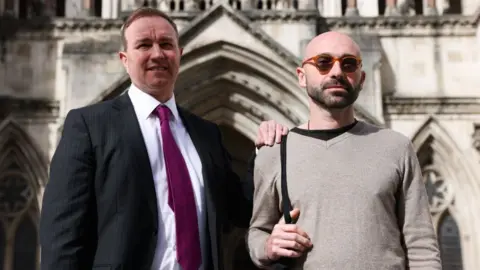The impending Supreme Court ruling regarding two former City traders convicted of manipulating interest rates stands at the intersection of legal, financial, and ethical dilemmas. Tom Hayes, formerly a trader at UBS, and Carlo Palombo, a former Barclays trader, highlight not only the personal repercussions of the scandal but also broader questions about accountability within the financial industry. Their case raises significant issues regarding possible miscarriages of justice, as highlighted by notable politicians such as former shadow chancellor John McDonnell and former Brexit Secretary David Davis, who emphasize the need for a public inquiry into the affair.
Both Hayes and Palombo were part of a group of 37 traders prosecuted for colluding to adjust the London Interbank Offered Rate (Libor) and the Euro Interbank Offered Rate (Euribor). These interest rate benchmarks are crucial; they dictate the cost of borrowing across millions of loans and mortgages. The U.S. Department of Justice and the Serious Fraud Office (SFO) accused Hayes of being the “ringmaster” of a manipulation scheme and subsequently sentenced him to 14 years in jail. The legal proceedings against these traders emerged during trials held between 2015 and 2019, during which 19 individuals were convicted, and 9 were imprisoned.
However, as the Supreme Court prepares to deliberate on their appeal, evidence has surfaced suggesting that senior bankers and government officials might have pressured financial institutions into similar conduct during periods of economic turbulence. Many central bankers and government officials, unlike the traders, faced no legal repercussions. This dichotomy has led to growing concerns that the traders have been unjustly scapegoated while those in power evaded accountability.
Additionally, the context surrounding the Libor manipulation scheme is critical. Libor, which has been utilized since 1986, is based on daily submissions from various banks regarding their borrowing costs. The integrity of these rates is essential; however, the traders argue that their actions—subtly nudging rates for favorable outcomes—were within industry norms that had been practiced for decades. Prosecutors, on the other hand, argued that this manipulation was illegal and indicative of an overarching conspiracy to defraud.
In recent years, the landscape has shifted dramatically following the release of evidence that other players in the financial system acted under similar pretenses but with government approval. This included pressure from institutions such as the Bank of England during the financial crisis, where large-scale adjustments were made to Libor and Euribor rates under the guise of maintaining market confidence. Given that no high-ranking officials faced charges, critics are highlighting a hypocrisy within the legal system.
The SFO remains resolute in defending the convictions of Hayes and Palombo, pointing out that their conduct was expressly unlawful. However, the Supreme Court’s ruling, which could potentially reverse these convictions, is pivotal not just for the defendants but also for defining regulatory and legislative boundaries in financial practices. The scenario presents a complex web of ethics, legality, and professional accountability, suggesting the overwhelming possibility of systemic failure in the face of widespread financial misconduct.
As the Supreme Court deliberates, it is essential to consider that this decision could send ripples across the global financial landscape, shifting the ramifications of these convictions dramatically. A finding in favor of Hayes and Palombo could not only exonerate them but also prompt broader reevaluations of similar cases worldwide, where traders have faced convictions under questionable circumstances. Ultimately, this saga exemplifies the fragility of trust within financial systems and raises the pressing need for thorough inquiries into the standards of conduct that govern banking practices.



